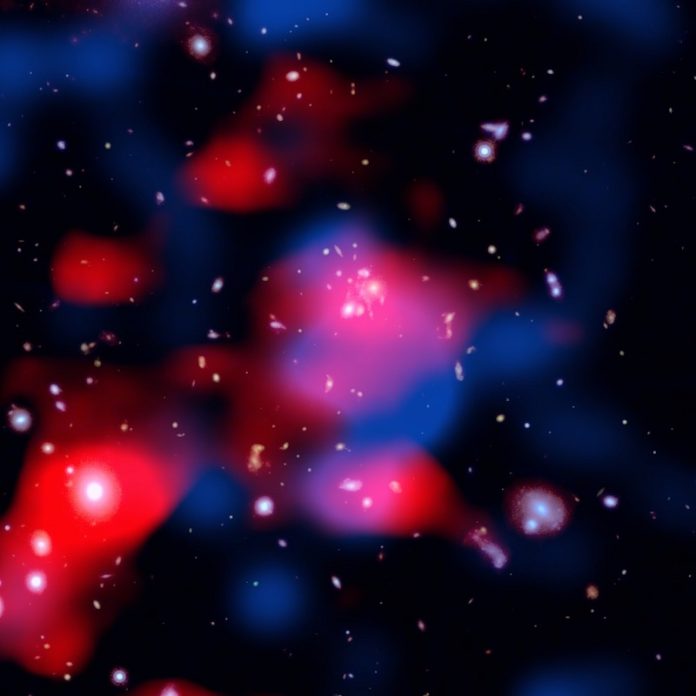
Astronomers have made a stunning discovery deep in space: a vast cloud of high-energy particles—called a “mini halo”—surrounding one of the most distant galaxy clusters ever seen.
This glowing halo lies so far away that its light has taken 10 billion years to reach Earth, giving scientists a rare glimpse into how the universe looked shortly after it formed.
The discovery marks the most distant mini halo ever found, doubling the distance of any previously known example.
It offers important clues about the early universe and the powerful forces that shaped it.
Galaxy clusters are huge structures made up of hundreds or even thousands of galaxies, all held together by gravity.
These clusters are surrounded by extremely hot gas and are often home to energetic phenomena, but scientists didn’t know if such energy-filled regions existed so early in the universe’s history.
Now, by studying the cluster known as SpARCS1049, an international team of researchers has confirmed that they do.
The scientists used LOFAR, a massive network of more than 100,000 radio antennas spread across eight European countries.
This powerful radio telescope allowed them to detect a faint, widespread signal coming not from any one galaxy, but from a huge region of space filled with high-energy particles and magnetic fields.
The glowing mini halo stretches more than a million light-years across and gives off radio waves that can be picked up from Earth.
This is the first time astronomers have found such a halo at such a great distance, and it shows that galaxy clusters were already filled with energetic particles very early in their lives.
One of the lead researchers, Julie Hlavacek-Larrondo from the Université de Montréal, described it as discovering a “cosmic ocean” where clusters of galaxies are constantly immersed in invisible energy.
Her colleague Roland Timmerman of Durham University added that the strength of the radio signal is surprising and proves that energetic particles have been shaping galaxy clusters for nearly the entire age of the universe.
Scientists think there are two main ways these halos form. One possibility is that supermassive black holes in the centers of galaxies are blasting out streams of high-energy particles. The other is that particles inside the cluster’s hot plasma are smashing into each other at extreme speeds, creating more high-energy particles.
Whatever the cause, this mini halo gives astronomers a new way to study the powerful physics at work in galaxy clusters billions of years ago.
As new telescopes like the Square Kilometer Array come online, researchers hope to uncover even more secrets about how magnetic fields, cosmic rays, and black holes shaped the early universe.
Source: University of Montreal.



